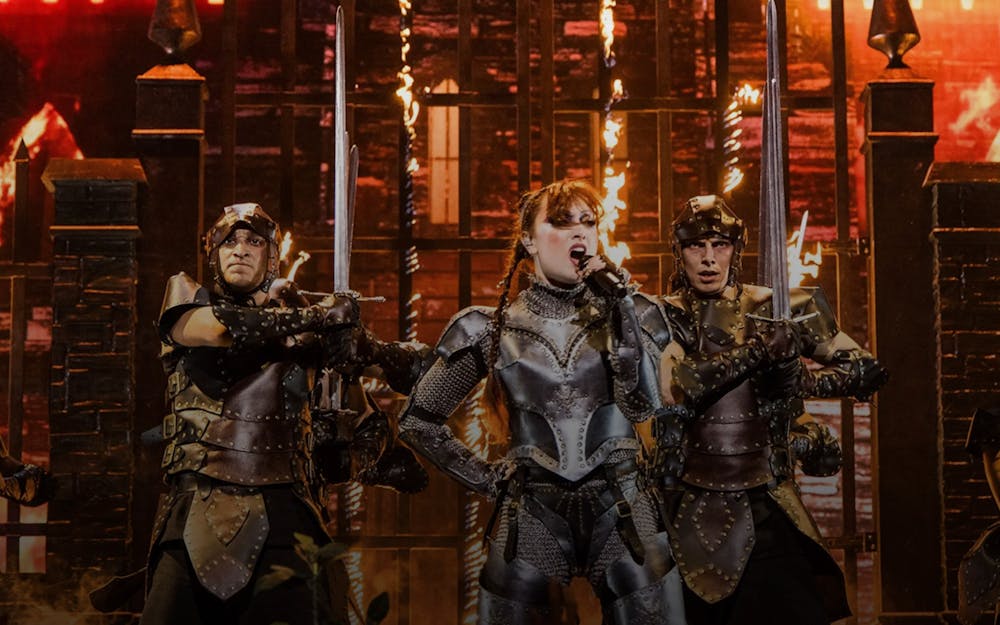For decades, MTV was a massive cultural force, continuously pushing the needle in both the music industry and pop culture at large. Beginning in 1981, the channel introduced the then-novel idea of the music video to America. The rest is history.
MTV’s status as a creator of taste and culture only increased with the inception of the MTV Video Music Awards, which have aired annually in the late summer since 1984.
On Sept. 11, the VMAs celebrated their 40th anniversary. As could be expected, they repeatedly reiterated their vast legacy throughout the ceremony.
At the beginning of each return from a commercial break, the VMAs showed clips from many of the show’s most defining moments. These include Madonna’s performance of “Like a Virgin” at the very first VMAs; Nirvana’s performance of “Lithium” at the 1992 show; Britney Spears’ oft-imitated 2001 rendition of “I’m a Slave 4 U” in which an albino Burmese python sat around her neck; and Lady Gaga’s 2009 rendition of “Paparazzi”, which depicts Gaga’s death at the hands of the media.
The broadcast has also featured many controversial moments — Kanye West interrupting Taylor Swift, Miley Cyrus holding a foam finger and twerking on Robin Thicke, etc.
Megan Thee Stallion presided over the evening, which proved to be an inspired choice, as her effortless charisma and sense of humor gave the ceremony a critical lightheartedness that clearly appealed to a wide range of demographics. The show brought in its highest viewer count since 2020, according to the Hollywood Reporter.
All night, the VMAs were not only honoring their own history, but they were actively trying to create new iconic quotable moments that would ideally continue to define American pop culture. And herein lies the issue.
All the aforementioned moments were organic — they arose from the sheer starpower, creative vision, untempered egos and personal vendettas of the artists. This year’s ceremony, however, proved what has been brewing in the American pop culture landscape for several years: Studios, labels and producers are attempting to manufacture their own iconography, rather than investing in artists with genuine, original visions and talents.
Eminem recreated his iconic 2000 performance of “The Real Slim Shady,” during which the rapper was surrounded by lookalikes of his alter ego as he entered the building. Twenty-four years later, this concept could have worked in theory, except now Eminem’s music has lost all of the edginess that made him a superstar. Instead, based off of his VMAs return, he’s become an angry middle-aged man desperately clinging to some sense of relevancy.
The 2024 VMAs show seems indicative of a wider trend in pop music: a preference for artists to perform medleys rather than one song in full. Out of the night’s 16 performances, only five featured just one song. Major legacy moments — such as Katy Perry’s performance in honor of receiving the Michael Jackson Video Vanguard Award — were stuffed to the brim with iconic hits that lasted just long enough for viewers to recognize the song before immediately moving onto the next one.
Medley performances seem to lean into a general cultural shift toward shorter content. In a world where so many people only recognize the 15 seconds of a song that they hear on TikTok, why would MTV think people want to hear the same song for four minutes?
Out of the 25 competitive awards that were given out, only seven were presented during the broadcast.
Get content from The Daily Lobo delivered to your inbox
One artist stood out from the crowd: Chappell Roan. Dressed like a cross between Joan of Arc and Katniss Everdeen, she opened her performance by shooting a crossbow into a projection of a medieval fort, setting it ablaze. She then performed her breakout hit “Good Luck, Babe!” as background dancers dressed as knights swordfought behind her.
As the song moved into its outstanding bridge, Roan got down on her knees, pleading her case, establishing the same commanding intimacy with the audience that Gaga did in 2009. The pure agony-turned-euphoria of the song’s climactic high note was delivered with characteristically impeccable vocals.
She ended the performance on her knees, staring wistfully into the distance as the extended hands of audience members reached out to her.
In an American pop music landscape seemingly bereft of originality, Roan’s meteoric ascent to popularity is vital, reigniting the dying breed that is the superstar who is able to combine pop stylings with a unique artistic vision.
Elijah Ritch is a freelance reporter for the Daily Lobo. They can be reached at culture@dailylobo.com or on X @dailylobo






